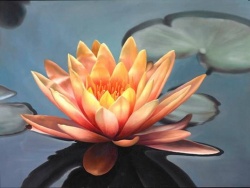Abortion
Abortion (gabbhapātana) is a form of birth control where the foetus is killed to prevent it from developing fully and being born. Abortion was known in ancient India and was done either by an operation, by violently shaking the mother or by administering various drugs. According to Buddhism, life begins at conception or very soon afterwards and, thus, abortion is considered to be killing. The Jātaka says that abortionists have an unfavourable rebirth (Ja.V,269).Monks and nuns are forbidden to procure abortions for others (D.I,11). In some cases abortion may be necessary to save the life of a mother, but today most abortions are performed to avoid embarrassment or the inconvenience of a baby arriving unplanned. To the Buddhist, these seem to be very poor reasons for destroying a life. Abortion is illegal in Sri Lanka and Burma, but not in Thailand.
“Act of abortion, i.e., terminating life of a fetus, is explicitly mentioned in Buddhist canonical scriptures, in the Vinaya-Pitaka, as a grave offence.
If abortion is brought about by a Buddhist monk, or if he is in any way a party to the procuring of an abortion by offering advice as to the methods or supplying abortive medicine, penalty is expulsion from monkhood.
This is in accordance with Buddhist view that destruction of life is a moral transgression.” Ling: 7 “According to Buddhist tenets, the life cycle of a sentient being begins when the consciousness enters the womb, and traditionally this has been considered the moment of conception.
Therefore, there is no objection to contraception which interferes with conception without damaging sentient life. Termination of pregnancy, on the other hand, necessarily occurs after conception, so it is not advised.” Tsomo /1995: 101
“As a scholar, Dr. R. Thurman (q.v.) is especially critical of fuzzy thinking in popular Buddhism.
As an example, he cites a 1992 article in Tricycle by Helen Tworkov, the magazine’s editor, in which Tworkov acknowledges strong anti-abortion teachings in Buddhism but also writes that ‘Dharma teachings can be used to validate either prochoice or anti-abortion politics.’
To Thurman, ‘that’s simply incorrect. It’s the taking of life.
The fundamentalists do have it emotionally right the killing of fetuses is a mass massacre from the Buddhist point of view. It is not a fuzzy issue in Buddhism.’ (R. Kamenetz)”
See also: Birth Control; Kalala; Ksitigarbha
Buddhism and Abortion, Damien Keown, 1999.
